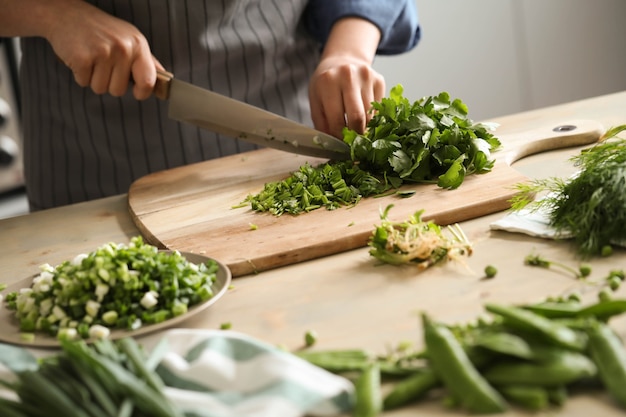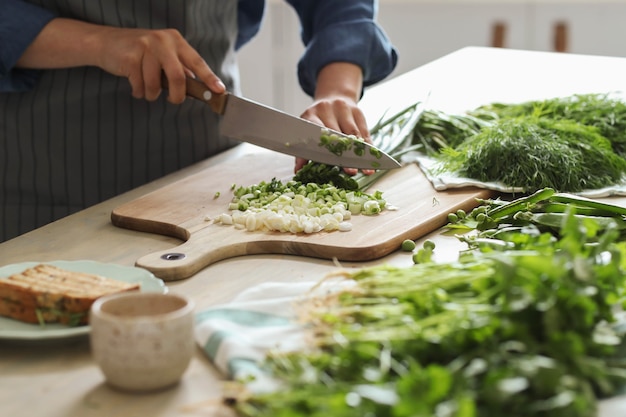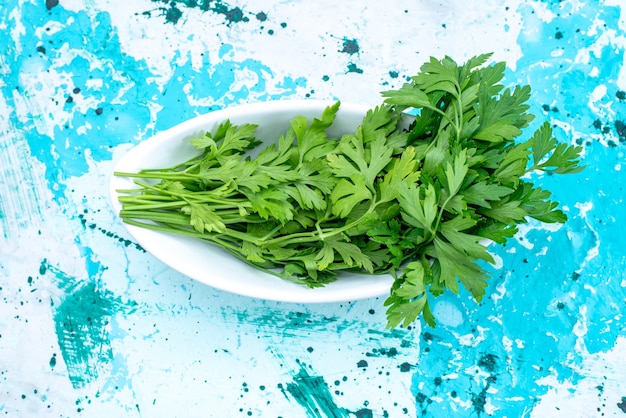Arugula, also known as rocket, is a leafy green that's been steadily climbing the ranks of culinary popularity in recent years. Its peppery, slightly bitter flavour is a love-it-or-hate-it kind of thing. But no matter how you feel about it, there's no denying that arugula is a versatile ingredient that can add a burst of freshness and zing to a wide range of dishes.
Personally, I've always been a fan of arugula. I love its vibrant green colour and the way it adds a little kick to salads and pizzas. I've used it in pasta dishes, stir-fries, and even sandwiches. It's like a culinary chameleon, adapting well to different flavours and cooking methods. But lately, I've been wondering, should arugula always be raw? Is there a way to cook it without losing its delicious peppery flavour? And if so, what are the best ways to do it?
That's where this guide comes in. I'm going to share everything I've learned about arugula, from its rich history and impressive nutritional value to the best ways to cook it and where to find the freshest bunches.
So, buckle up, fellow food enthusiasts! It's time to delve into the world of arugula and uncover its secrets!
(Part 1) Arugula: A Brief History

Arugula has a long and fascinating history, dating back to ancient times. It's believed to have originated in the Mediterranean region, where it was cultivated for its medicinal properties long before it became a culinary star.
The ancient Greeks used arugula to treat a variety of ailments, from headaches and coughs to even snakebites. The Romans, too, were big fans of arugula, and they incorporated it into their cuisine. Imagine, Roman emperors enjoying arugula salads!
Over the centuries, arugula spread throughout Europe and Asia, eventually making its way to the Americas. Today, it's a popular ingredient in kitchens around the world, finding its place in everything from gourmet restaurants to home-cooked meals.
Arugula's Journey Through History:
- Ancient Times: Arugula's roots can be traced back to the Mediterranean region, where it was valued for its medicinal uses by ancient Greeks and Romans. It was a true "superfood" even then!
- Medieval Times: Arugula's popularity continued to grow during the Middle Ages, spreading across Europe and becoming a staple in many diets.
- The Renaissance: The Renaissance saw a renewed interest in arugula as its culinary uses were further explored. Chefs began to experiment with different ways to use arugula, adding it to various dishes and finding new ways to highlight its unique flavour.
- Modern Times: Today, arugula is a beloved ingredient in kitchens around the world, enjoyed for its unique flavour and versatility. It's found in salads, pizzas, pastas, and even used as a garnish.
(Part 2) Arugula: nutritional powerhouse

Arugula isn't just delicious, it's also packed with nutrients. It's a good source of vitamins A, C, and K, as well as folate, potassium, and calcium.
It's also low in calories and fat, making it a healthy choice for those watching their weight. And if you're looking to boost your intake of antioxidants, arugula is a great option. It's rich in antioxidants, which can help protect your cells from damage caused by free radicals.
Arugula's Nutritional Breakdown:
Here's a closer look at the vitamins and minerals you can find in a serving of arugula:
| Nutrient | Amount per 100g |
|---|---|
| Vitamin A | 3,570 IU |
| Vitamin C | 14.4 mg |
| Vitamin K | 140 mcg |
| Folate | 74 mcg |
| Potassium | 322 mg |
| Calcium | 47 mg |
So, arugula isn't just a tasty addition to your meals, it's also a nutritional powerhouse!
(Part 3) How to Choose the Perfect Arugula

When choosing arugula, look for bunches that are fresh and vibrant green. Avoid any bunches that look wilted or yellowed. The leaves should be firm and crisp, not limp or soft.
I always check for any signs of bruising or damage. Arugula is a delicate green, so it's important to choose bunches that look fresh and healthy. The best arugula is usually found at farmers' markets or specialty produce stores, where it's likely to have been harvested recently.
Tips for Selecting Arugula:
- Check the Colour: The leaves should be a vibrant green, with no yellowing or brown spots. A vibrant green colour is a sign of freshness.
- Look for Freshness: The leaves should be firm and crisp, not limp or wilted. Avoid any bunches that look bruised or damaged. This is especially important for arugula, as it wilts quickly.
- Smell the Arugula: Fresh arugula has a pleasant, peppery aroma. If it smells stale or has a strong off-putting odour, it's best to avoid it.
- Choose Local: If possible, choose arugula from a local farm or farmer's market for the best quality and flavour. Locally-grown arugula is likely to be fresher and more flavorful.
(Part 4) Storing Arugula
Proper storage is crucial for keeping arugula fresh and crisp. Once you've brought your arugula home, give it a quick rinse in cold water and pat it dry with paper towels. Then, wrap it loosely in paper towels and store it in a plastic bag in the refrigerator.
It's important to avoid washing arugula until you're ready to use it, as washing it too early can cause it to wilt faster. Stored properly, arugula can last for up to 5 days in the refrigerator.
(Part 5) Arugula: Raw and Ready to Eat
Arugula is often enjoyed raw in salads, sandwiches, and pizzas. Its peppery flavour adds a nice kick to these dishes.
I personally love to toss arugula into a simple salad with some balsamic vinegar, olive oil, and a sprinkle of Parmesan cheese. It's a classic combination that never fails to impress. But arugula also works well in more complex salads with fruits, nuts, and other vegetables.
Arugula in Salad Inspiration:
- Classic Caesar Salad: The peppery bite of arugula complements the rich flavour of Caesar dressing beautifully. It adds a layer of complexity and freshness.
- Summer fruit salad: Arugula adds a refreshing touch to salads with juicy berries, melon, and citrus fruits. The contrast of the peppery arugula with the sweetness of the fruit is delightful.
- Roasted Vegetable Salad: Arugula provides a welcome contrast to the earthy flavours of roasted vegetables. It adds a brightness and freshness that balances the roasted flavours.
(Part 6) Arugula: The Art of Cooking
While many people prefer arugula raw, there are actually several ways to cook it without sacrificing its flavour. Cooking arugula can actually enhance its peppery flavour and make it more palatable for those who find it too intense raw.
When cooking arugula, it's important to do it quickly and over low heat. I typically wilt it in a pan with a little bit of olive oil, garlic, and red pepper flakes. This technique brings out the arugula's flavour and creates a delicious sauce that can be tossed with pasta, used as a topping for pizza, or served as a side dish.
Cooking Arugula: Methods and Tips:
- Wilt It: Wilt arugula in a pan over low heat with a little oil, garlic, and red pepper flakes for a simple and delicious side dish or sauce. The heat softens the leaves while bringing out their peppery flavour.
- Sauté It: Sauté arugula with other vegetables and spices for a flavourful addition to stir-fries and pasta dishes. Adding arugula at the end of the cooking process allows it to retain its bright green colour and adds a vibrant flavour.
- Roast It: Roast arugula with other vegetables for a sweet and savory side dish or topping for pizzas and salads. Roasting brings out the sweetness of the arugula and enhances its flavour profile.
(Part 7) Arugula: Recipes to Delight
Here are some of my favourite recipes that showcase the versatility of arugula, both raw and cooked:
Recipes featuring Arugula:
- Arugula and Roasted Tomato Pizza: The peppery arugula pairs perfectly with the sweetness of roasted tomatoes and the tanginess of mozzarella cheese. The combination is both delicious and satisfying.
- Arugula and Lemon Pasta: A light and refreshing pasta dish with wilted arugula, lemon zest, and a touch of garlic. The acidity of the lemon complements the peppery arugula, creating a bright and flavorful dish.
- Arugula and Prosciutto Salad: A simple yet elegant salad with arugula, thinly sliced prosciutto, and a balsamic vinaigrette. The salty prosciutto and tangy balsamic vinegar bring out the best in the peppery arugula.
- Arugula and Goat Cheese Quesadillas: A creamy and satisfying quesadilla with arugula, goat cheese, and a sprinkle of red pepper flakes. The creamy goat cheese and spicy red pepper flakes balance out the peppery flavour of the arugula.
- Arugula and Mushroom Stir-fry: A quick and easy stir-fry with arugula, mushrooms, and your favourite Asian-inspired sauces. The arugula adds a fresh and peppery flavour to the stir-fry, complementing the earthy mushrooms and savory sauces.
(Part 8) FAQs: Unlocking the Arugula Mystery
Here are some commonly asked questions about arugula, with detailed answers to help you understand this versatile green better:
FAQs about Arugula:
- Is arugula bitter? Arugula has a distinctive peppery and slightly bitter flavour. Some people find it too intense, while others appreciate its unique taste. The bitterness can vary depending on the variety of arugula and how it's grown. If you find the bitterness too strong, you can try using it in smaller quantities or pairing it with other ingredients that balance out the bitterness, like sweet fruits or creamy cheeses.
- Can you cook arugula? Yes, you can definitely cook arugula. In fact, cooking it can actually enhance its peppery flavour and make it more palatable for some. Just remember to cook it quickly over low heat to avoid wilting. Cooking also softens the leaves, making them more tender and easier to digest.
- Is arugula healthy? Arugula is a nutritious leafy green packed with vitamins, minerals, and antioxidants. It's a good source of vitamin A, C, and K, as well as folate, potassium, and calcium. So, adding arugula to your diet is not only delicious but also a great way to boost your nutrient intake.
- What does arugula taste like? Arugula has a distinctive peppery and slightly bitter flavour that some people describe as similar to mustard greens or watercress. The intensity of the flavour can vary depending on the variety of arugula and how it's grown. Some people find the flavour to be refreshing and invigorating, while others find it too strong. It's a matter of personal preference.
- What can I substitute for arugula? If you don't like the taste of arugula, you can substitute it with other leafy greens like spinach, kale, or baby lettuce. For a similar peppery flavour, try watercress or mustard greens. However, no other leafy green will have the exact same taste as arugula, so be prepared for a different flavour profile.
Everyone is watching

How to Cook Frozen Lobster Tails Perfectly: A Step-by-Step Guide
RecipesLobster. Just the word conjures up images of lavish meals, special occasions, and a taste of luxury. But let's...

Pigs in a Blanket Cooking Time: How Long to Bake for Perfect Results
RecipesAh, pigs in a blanket. Just the name conjures up images of those delightful little parcels of crispy pastry en...

Pork Fillet Cooking Time: How Long to Cook It Perfectly
RecipesPork fillet, or tenderloin as it's sometimes called, is a real favourite in our house. It's so versatile, and...

The Ultimate Guide to Cooking Delicious Frankfurters
RecipesLet's face it, we all love a good frankfurter. It's a classic, simple, and always satisfying. But let's be rea...

Wolf Meat Recipes: A Guide to Cooking Wild Game
RecipesLet's be honest, you don't see wolf meat at your local butcher shop every day. It's a bit of a wild card, but ...
